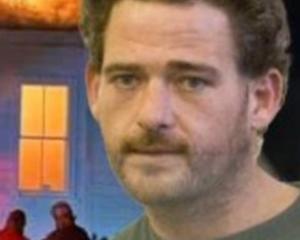
On the first day of Mark Lundy's appeal at the Privy Council in London, David Hislop QC revealed the existence of a previously undisclosed police document which was described as a "revelation".
The reliability of the science used to identify DNA matter found on Lundy's shirt as brain tissue is a key plank to overturn his convictions for murdering his wife Christine and daughter Amber, 7.
In what he called a "significant development", Mr Hislop said Lundy's legal team had received a document from the Crown Law Office in New Zealand just last week.
The document was written by the officer in charge of the murder case, Detective Sergeant Ross Grantham, asking a more senior officer for funding to visit an expert in the United States to identify the DNA matter on Lundy's shirt.
Pathologists for the police thought the tissue was from the brain but suggested the evidence be reviewed by a neuro-pathologist Dr Heng Teoh, according to the document read out by Mr Hislop.
But Dr Teoh said the tissue - which was found 58 days after the murders in August 2000 - was too degenerated to successfully identify as brain tissue.
According to the document - which was not disclosed to defence lawyers at the original trial - the neuropathologist said Lundy should not be convicted on the strength of the forensic evidence he viewed.
Mr Grantham also told his superior officer that the scientist's opinion gave the police an early "insight" into any potential defence for Lundy.
He was later given permission to fly to Texas to show the samples to Dr Rodney Miller, who gave damning evidence about two specks of tissue found on one of Lundy's polo shirts.
Mr Hislop told the Privy Council that the science used by Dr Miller to identify the tissue as brain tissue was "fundamentally flawed".
He said the previously undisclosed police document was a "substantial development" and was at odds with the Crown case that the DNA was well preserved.
"Detective Sergeant Grantham was very alive to the value of this information to the defence. He chose to not disclose it," said Mr Hislop.
He said that Mr Grantham - now a detective inspector - later signed an affidavit that stated all "relevant documents" had been disclosed to the defence.
"On the face of it, that appears to be misleading. Or it's an oversight," Mr Hislop told the five members of the Privy Council, which include Dame Sian Elias, the Chief Justice of New Zealand.
He said the discovery of the advice from Dr Teoh, combined with the "misleading" statement from Mr Grantham, added weight to a suggestion at the original 2002 trial that police planted the brain tissue evidence.
The Law Lords of the Privy Council and Dame Sian vigorously questioned Mr Hislop over his assertion, saying it was a "big step" to jump from non-disclosure of an important document to falsifying evidence.
"That is a very serious accusation," said Lord Hope.
Mr Hislop said he was not accusing Mr Grantham, but was saying only that a jury could make an inference of a "cover-up".
Earlier in the hearing, Lord Hope, described the discovery of the document as a "striking revelation".
"At the very least, this was a basis for cross-examination at trial."
Several experts in the testing method and in forensic pathology from New Zealand and England have sworn statements to challenge Dr Miller's evidence.
Mr Hislop said the other planks of the appeal will also challenge the pathologist's report on the time of death, computer evidence to support the time of death conclusion, and the trial judge's failure to properly direct the jury on identification.
Lundy is serving at least 20 years in prison after being convicted of the axe attack in the family's Palmerston North home in August, 2000.
The non-parole period was lifted from 17 years by the Court of Appeal after his appeal failed.
The crown case at Lundy's trial was that Lundy, now 54, went to Wellington on August 29, 2000, on a fortnightly trip sales trip to visit kitchen suppliers.
He checked into a Petone motel at 5pm, and 30 minutes later received a phone call from his wife telling him that Amber's Girl Guides meeting was cancelled and they were having McDonald's for dinner.
The Crown said Lundy convinced Christine to get Amber into bed by 7pm so they could have a romantic evening together.
He then drove 150km back to Palmerston North at high speed, parked 500m from his home, then ran inside around 7pm and attacked his wife with a tomahawk.
When Amber got up to see what was happening, he killed her too, the Crown said.
Lundy then sped back to Wellington, arriving just before 8.30pm when he spoke to a friend on his cellphone.
Lundy's defence was that he stayed in Petone, read a book on the foreshore, drank alcohol and paid a prostitute to visit him at 11.30pm.
The bodies were found by Christine's brother around 9 o'clock next morning.
Lundy was arrested six months later and was found guilty after a six-week trial in 2002.
The Crown suggested his motive for the murders was to claim a life insurance payment so he could pay a debt.
The case was circumstantial, and focused on a three-hour time frame and whether Lundy could have done what he was accused of doing and been back in Petone to call a friend at 8.30pm.
Critics have also questioned the pathology report which used stomach contents to determine the time of death; a process challenged by some experts.
There were also questions over the timing of how the family computer was shut down at 11pm - police said Lundy tampered with it - and the credibility of the sole eye witness who claimed the obese Lundy ran past her wearing a long, blonde wig.
The hearing is set down for three days, but the Law Lords' decision on Lundy's convictions will take weeks, possibly months.
The Lundy appeal is likely to be one of the last New Zealand cases heard at the Privy Council.
The Supreme Court replaced the Privy Council as New Zealand's highest court in 2004.
The Privy Council can still determine appeals in certain existing proceedings, including appeals against Court of Appeal judgments given before January 1, 2004.
- Jared Savage at the Privy Council in London











